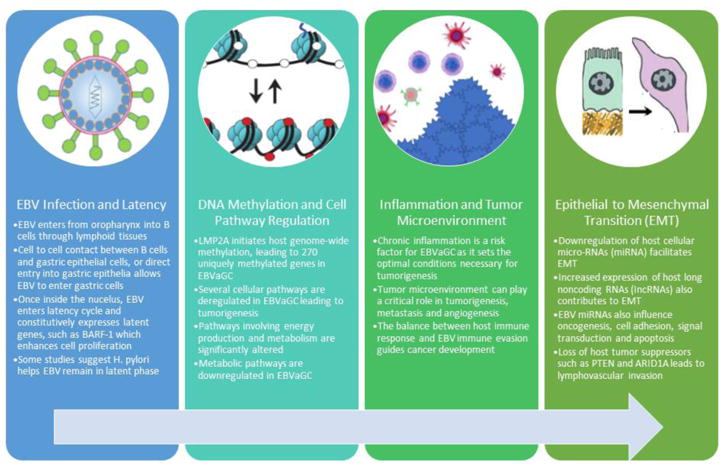Figure 1. Pathogenesis of EBVaGC.

Although the pathogenesis of EBVaGC is not clearly established, several factors allow EBV to stimulate oncogenesis in the gastric epithelium. Once EBV infects the gastric epithelial cell, it enters its latency phase and leads to genome-wide methylation and cell pathway regulation. Aberrant genetic expression and the interaction of EBV infected gastric epithelial cell with the tumor microenvironment dictates cell fate, ultimately leading to cancer development and epithelial to mesenchymal transition.
